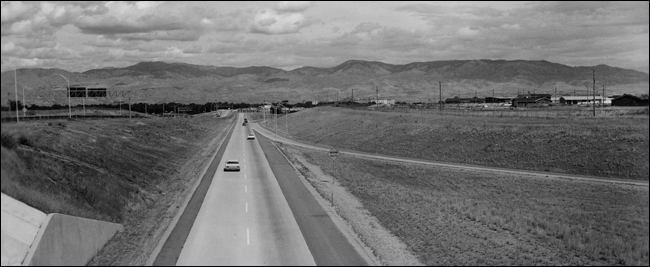

ITD From the Vault: 1990
50% ITD, 50% ACHD, 100% confusion
As you can well imagine, the public has long confused ITD and ACHD. There is some occasional overlap, but ITD generally takes care of the interstates and state highways, while ACHD presides over local or county roads. That misunderstanding about roles and responsibilities was the catalyst for a new hybrid job position borne during the early days of the 1990s as the Connector was being built. The following story, from 1990, describes the very first person in that new job - Julie Stutts:
![]() Department liaison helps inform the general public
Department liaison helps inform the general public
LIAISON - communication for establishing and maintaining mutual understanding; a close bond or connection.
As the public information liaison for both the Idaho Transportation Department and Ada County Highway District, Julie Stutts helps people cope with construction on the new Connector project.
"I try and let motorists know how work on the project is going to impact them so they can avoid traffic jams, or at least plan for it as they make their way around town," Stutts said.
Her job is unusual in the fact that she works for two government agencies. The Connector is a joint project between lTD and ACHD — that's how she got her unusual job title.
After working four years as a reporter for The Idaho Statesman, she was hired in 1989 primarily to provide information about work on The Connector, but she also keeps tabs on all road construction projects in Boise, Ada County, and lTD's District 3.
Stutts is eager to tell those who don't know that The Connector is a $60-million project, the largest one built in Boise since Interstate 84 was constructed in the early 1960s. Completion is set for late 1992.
"The Connector has been designed to help east-west traffic in Boise move more quickly and efficiently across town," she said. "But before that can happen, we'll have to experience a few growing pains."
That's her biggest challenge - convincing people of the idea that growing pains may mean temporary detours and restrictions that will later benefit everyone.
"This fall, we're gearing up for a major public information campaign to help motorists deal with three major Connector detours," she said.
"These detours are expected to last for at least a year so I'll be educating people about them but I'll also be telling them that if they can find a better, legal way to get around the construction zone - go for it!"
Part of this educational process includes holding meetings with law enforcement, fire and public transportation officials to help them understand the project and to determine alternate routes around construction. These same meetings are also planned for business owners along the affected areas.
"We want to get as many people as possible to understand why we're doing, what we're doing," Stutts said. "Hopefully this understanding will foster a team spirit between the public and the lTD and ACHD that will last until The Connector is done."
Besides keeping the public up to speed on Connector construction, Stutts operates the Highway Helpline. The Helpline is a free service offered to motorists to help them plan the best route through the seemingly infinite maze of construction in Boise.
By calling 334-8888, motorists will hear Stutts giving a quick daily summary of the principal streets under construction in the Boise area.
In addition to getting information out about The Connector, she also writes news releases about other road construction projects that may pose restrictions or detours for motorists. This information is faxed and mailed to the news media and other emergency service providers to help keep drivers aware of construction zones.
"Another aspect of my job is helping the public and others get answers to questions about right-of-way policies, future road construction projects and sometimes simple suggestions on the easiest way to get from Point A to Point B in Boise," she said.
Outside of work, Stutts enjoys playing softball, tennis and soccer. She also joined Toastmasters International to hone her public-speaking skills. Working with TV and radio reporters and giving speeches prompted her to join the club.
So, if you see her in the halls at Headquarters, District 3 or at ACHD, don't hesitate to ask her your burning question about road construction or about when your pet project is expected to be completed.
"It's my job to know but, if I don't, I'll find out as fast as I can," she said. "And, as they say in public relations, 'I'll get back to you.'"
Editor's 2018 Note: Stutts was with ITD from 1990-96, left to stay home with young kids, then went to Idaho Power, where she's been for 20 years.
"People had a hard time understanding where the Connector was going to begin and end. We commissioned someone to hand draw an illustration, with the goal of helping people imagine what the project would look like when it was finished. It was a great tool and I think we helped folks understand where they would get on and off of the project and how it would "connect" to Interstate 84. There was a lot of cofusion at the time, but now it seems hard now to imagine coming into downtown Boise without it!"
When you mention a time without the Connector, you get the same facial reaction as telling people you used to have your phone nailed up on the wall, tethered by a cord, and it was rotary dial.
Published 09-14-18